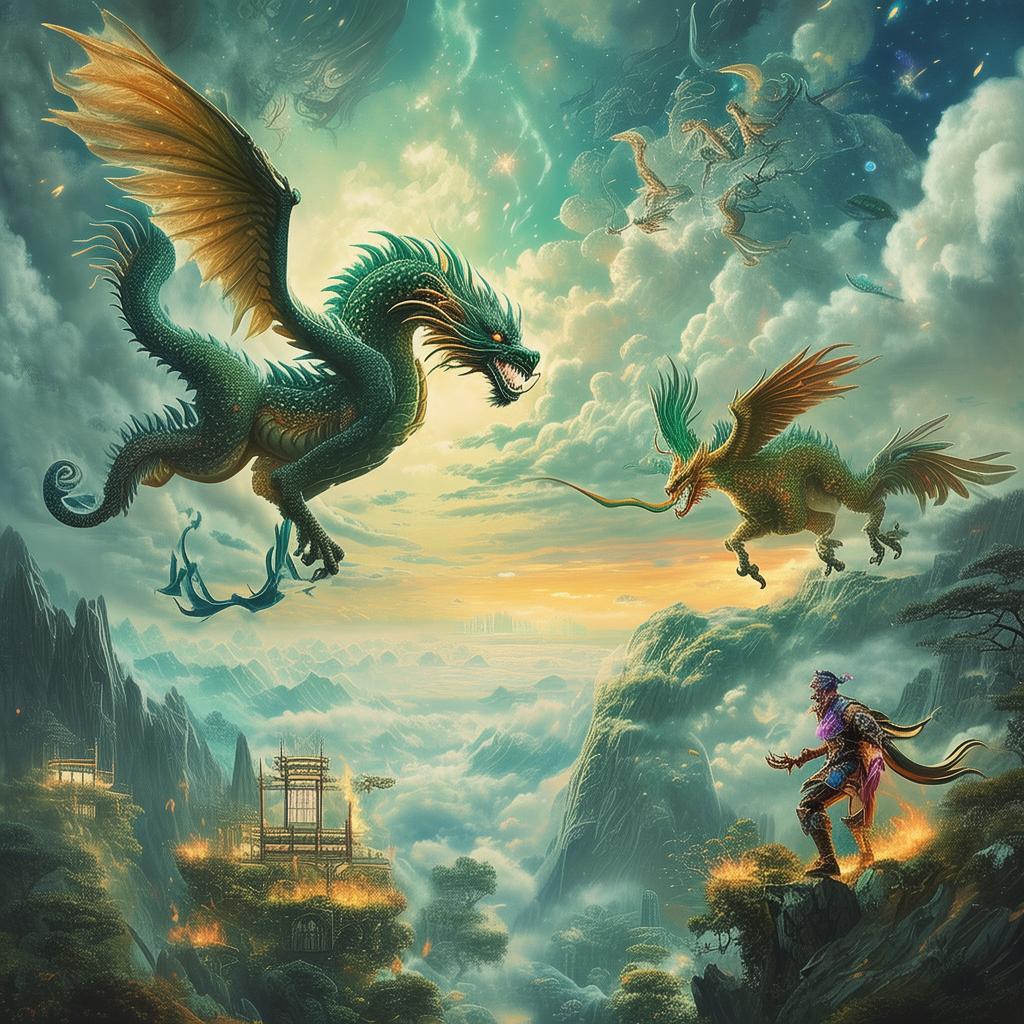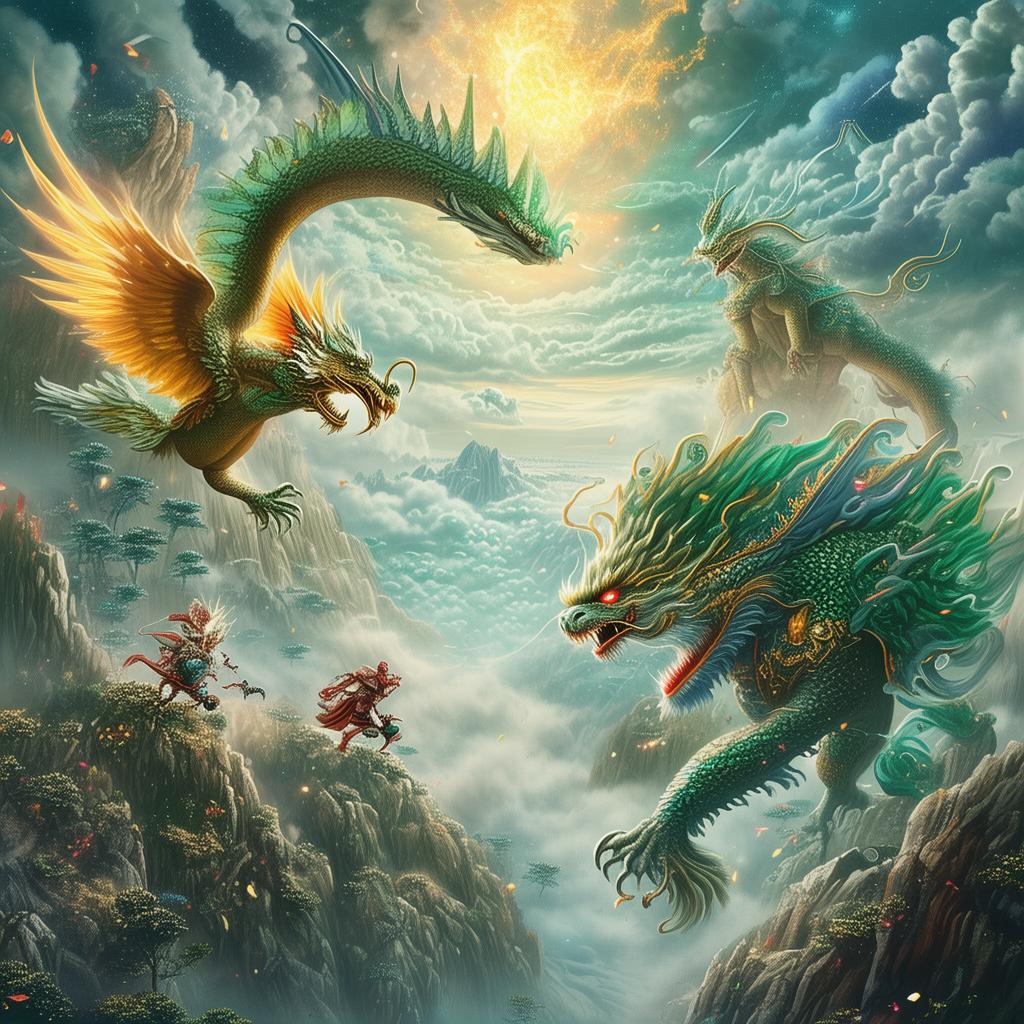Whispers of the Mind: The Riddle of the Sphinx
In the heart of ancient Egypt, where the pyramids stood as silent sentinels against the ever-roaring desert winds, there lived a young woman named Aria. Her gift was rare and peculiar, a gift that could read the thoughts of others, a gift that could make or break lives. Yet, it was also a gift that burdened her with the weight of other people's secrets and fears.
Aria had grown up in a village shrouded in mystery and reverence for the gods. Her father, a humble scribe, had always been protective of her abilities, warning her that the power to read minds could be as dangerous as it was useful. Despite his precautions, Aria had learned to harness her gift, using it to help her village and to keep her own thoughts private.
One fateful night, as the village was celebrating the harvest, a mysterious figure appeared in the temple of the gods. He was a man of regal bearing and piercing eyes, and he spoke of a great evil that threatened not just their village, but the entire land of Egypt. He spoke of the Sphinx, an ancient creature of myth and lore, whose riddle had not been solved for millennia. The one who could solve the riddle would have the power to seal away the evil, but the riddle was a test of mind and soul.
The man, calling himself The Seer, challenged Aria to solve the Sphinx's riddle within seven days. If she failed, the village would be doomed, and the evil that The Seer spoke of would be unleashed upon them. Desperate to save her people, Aria accepted the challenge.
The Sphinx's riddle was simple on the surface, but its depths were unfathomable: "What walks on four legs in the morning, two legs at noon, and three legs in the evening?"
Aria pondered the riddle, her mind racing with possibilities. She knew that the answer was not what it seemed, and she sought guidance from her father, who had heard tales of the Sphinx's riddle from his own father. He advised her to look beyond the literal meaning and to consider the riddle as a metaphor for the human condition.

As the days passed, Aria delved deeper into the riddle, her mind consumed by the challenge. She sought out those who had once solved riddles for the gods, hoping to glean some insight from their wisdom. She visited the temples, the markets, and even the tombs of the pharaohs, her thoughts ever circling back to the riddle.
In her travels, Aria encountered a young man named Kael, who was also on a quest of his own. Kael was a skilled cartographer, and he sought to find the lost city of Atlantis, believing it to be the key to unlocking the riddle. The two found themselves drawn together by their shared purpose, and soon they were working together to solve the Sphinx's enigma.
Their journey took them through the vast deserts of Egypt, through the bustling markets of Thebes, and even to the remote island of Crete, where the mythical Minotaur was said to dwell. Along the way, they faced numerous challenges, from treacherous landscapes to the cunning tricks of their enemies, who were also seeking the answer to the riddle.
As they neared the end of their quest, Aria and Kael discovered that the answer to the Sphinx's riddle was not a single truth, but a reflection of the human experience. The creature that walked on four legs in the morning was a child, who was learning to walk. The creature that walked on two legs at noon was a grown man, who stood on two legs. And the creature that walked on three legs in the evening was an elderly person, who carried a staff, symbolizing the three legs of a crutch.
With this newfound understanding, Aria and Kael returned to the temple, where The Seer awaited them. They presented their answer, and The Seer, impressed by their insight, revealed that they had passed the test. The evil that threatened Egypt was sealed away, and the land was saved.
In gratitude for her bravery and wisdom, The Seer offered Aria a place among the gods, but she declined, choosing instead to return to her village and to continue using her gift to help others. Kael, inspired by Aria's courage, followed her path, and together they became the protectors of the land.
The story of Aria and Kael spread far and wide, and the legend of the Sphinx's riddle became a cautionary tale about the nature of knowledge and the importance of self-discovery. And so, the myth of the young mind reader who solved the riddle of the Sphinx lived on, a testament to the power of the human mind and the enduring spirit of those who seek the truth.
✨ Original Statement ✨
All articles published on this website (including but not limited to text, images, videos, and other content) are original or authorized for reposting and are protected by relevant laws. Without the explicit written permission of this website, no individual or organization may copy, modify, repost, or use the content for commercial purposes.
If you need to quote or cooperate, please contact this site for authorization. We reserve the right to pursue legal responsibility for any unauthorized use.
Hereby declared.









